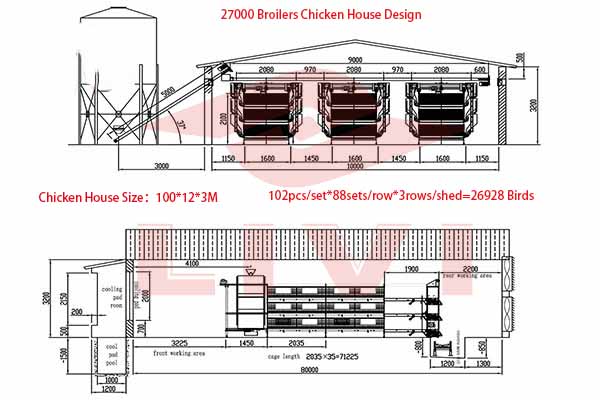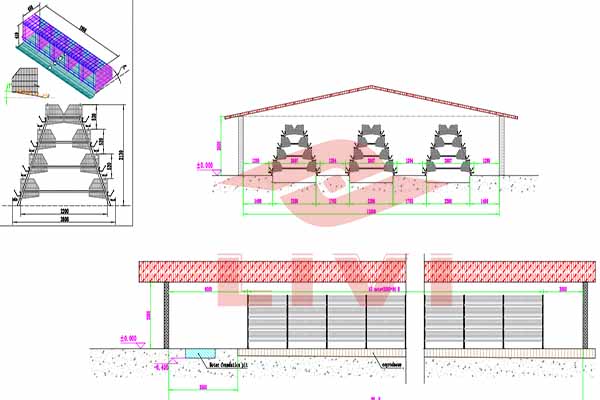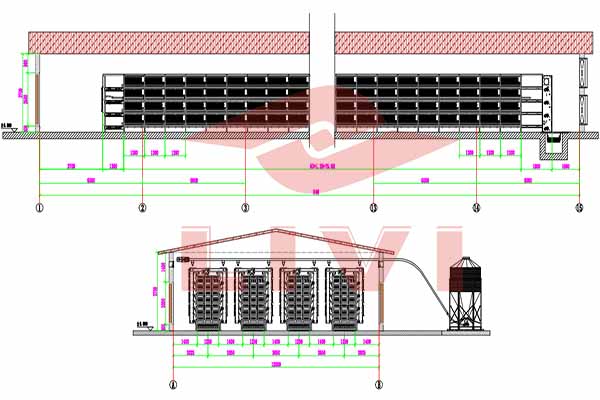A Comprehensive Guide to Raising 10000 Layers in Kenya
Kenya’s poultry farming industry has seen significant growth due to the increasing demand for eggs and poultry products. If you’re plan to raising 10000 layers in Kenya, this guide will provide you with essential steps, from building the chicken house to managing the layers effectively. A key focus will be on utilizing poultry battery cages in Kenya to enhance efficiency, productivity, and space utilization.
1. Why Raising 10,000 Layers in Kenya is Profitable
The demand for eggs in Kenya is consistently high, making poultry farming a profitable venture. With 10,000 layers, you could produce approximately 9,000 eggs daily, depending on the quality of care and management. This output offers significant revenue potential, alongside byproducts such as chicken manure, which can be sold as fertilizer to local farmers.
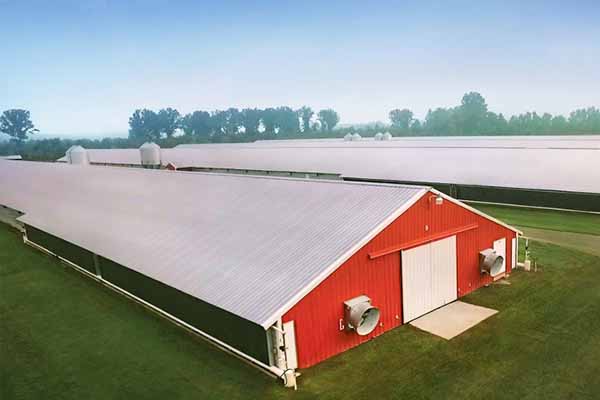
A Comprehensive Guide to Raising 10000 Layers in Kenya
2. Constructing a Chicken House for 10,000 Layers
To begin raising 10,000 layers, the first critical step is constructing a properly designed chicken house. The right housing will enhance the health and productivity of your birds. Consider these factors when building your poultry house:
- Size and Space: A well-planned chicken house should efficiently use space. With the use of poultry battery cages in Kenya, you can house more birds in a smaller area compared to traditional methods. Each cage is designed to accommodate multiple layers, optimizing your available space.
- Ventilation: Proper ventilation is crucial to maintaining a healthy environment inside the chicken house. Ensure there is adequate airflow through windows, fans, or vents to prevent heat stress and minimize the spread of diseases caused by poor air quality.
- Litter and Waste Management: A good drainage system is essential to prevent water and waste accumulation. With battery cages, managing waste is easier as the droppings fall beneath the cages and can be cleaned with minimal effort, reducing the risk of disease spread.
3. The Benefits of Using Poultry Battery Cages in Kenya
Investing in poultry battery cages in Kenya is the most efficient way to manage a large flock of 10,000 layers. Here’s why battery cages are essential for success:
- Maximized Space Usage: Battery cages allow you to raise more birds in a smaller area by stacking the cages vertically. This is especially useful for those with limited land space, enabling you to accommodate all 10,000 layers comfortably.
- Improved Egg Production: Layers in battery cages are less stressed and have better access to food and water. This leads to increased egg production and reduces egg breakage, as the cages are designed with egg collection trays that keep the eggs safe and clean.
- Easy Management: Monitoring and managing layers becomes simpler with battery cages. Feeding and watering systems can be automated, reducing the amount of labor needed for large-scale operations. Additionally, sick birds can be easily isolated without affecting the entire flock.
- Disease Control: By limiting the birds’ contact with their waste, battery cages significantly reduce the risk of infections and disease outbreaks. This promotes healthier birds and higher egg production.
4. Selecting the Right Poultry Battery Cages in Kenya
Choosing the right poultry battery cages in Kenya is critical to your farm’s success. Here’s what to consider:
- Material Quality: Look for cages made from durable, rust-resistant materials like galvanized steel. This ensures they withstand Kenya’s weather conditions and last longer, reducing the need for frequent replacements.
- Capacity and Design: The capacity of your battery cages should match the number of birds you plan to house. Some cages hold 96 birds or more, which is ideal for large-scale operations. Choose a design that allows for easy feeding, watering, and egg collection.
- Feeding and Water Systems: Modern battery cages come with built-in feeding and watering systems that can be automated to ensure each layer receives the proper nutrition and hydration. This reduces feed wastage and ensures consistent egg production.
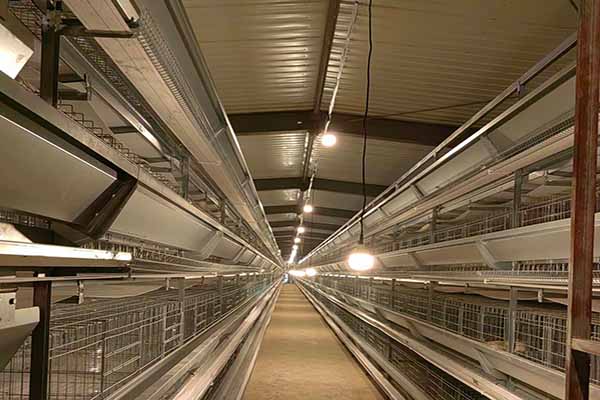
Poultry Battery Cages in Kenya from Livi Machinery
5. Feeding and Nutrition for 10,000 Layers
Feeding your layers properly is essential for maximizing egg production. For 10,000 layers, you need to provide balanced nutrition that meets their dietary needs.
- Layer Mash: Feed your birds with high-quality commercial layer mash rich in proteins, vitamins, minerals, and calcium to ensure strong eggshells. The average daily consumption is around 120 grams per bird.
- Water: Layers need a constant supply of clean, fresh water, especially in hot weather conditions. Make sure your battery cage system includes an efficient water supply system to meet their hydration needs.
6. Disease Management and Biosecurity
Maintaining healthy layers is key to successful egg production. Disease prevention strategies should be put in place to safeguard your flock:
- Vaccination: Make sure your birds are vaccinated against common diseases like Newcastle Disease, Gumboro (Infectious Bursal Disease), and Fowl Pox. Follow the recommended vaccination schedule to protect your flock.
- Biosecurity Measures: Limit access to your poultry house, disinfect footwear and equipment, and regularly clean the chicken house and battery cages. This helps prevent the introduction of diseases from external sources.
7. Egg Collection and Marketing
When raising 10,000 layers, you will be collecting thousands of eggs every day. Battery cages simplify egg collection as the eggs roll out onto collection trays, keeping them safe and reducing the risk of breakage.
- Handle Eggs with Care: After collecting, store the eggs in a cool and dry place to maintain freshness before selling.
- Marketing Channels: You can sell your eggs to supermarkets, restaurants, hotels, or local markets. It’s important to establish reliable marketing channels to ensure consistent sales and income.
8. The Importance of Using Livi Poultry Battery Cages
For farmers looking to efficiently raise 10,000 layers in Kenya, Livi poultry battery cages offer an excellent solution. These cages are designed with durability, efficiency, and ease of management in mind. Livi’s cages are built using high-quality galvanized steel, ensuring they last longer and provide better protection for your birds. Additionally, their automatic feeding and watering systems make it easier to manage large flocks while maintaining optimal egg production.
By choosing Livi’s poultry battery cages, you can increase your farm’s efficiency, reduce labor costs, and ensure the health and productivity of your 10,000 layers, ultimately maximizing your profits in the Kenyan poultry market.
Conclusion
Raising 10,000 layers in Kenya can be highly profitable if managed properly. From constructing the right chicken house to selecting high-quality poultry battery cages in Kenya, every step is vital to ensuring success. With the help of advanced equipment like Livi poultry battery cages, you can streamline your operations, improve egg production, and meet the growing demand for poultry products in Kenya.
If you want to start your chicken business, please leave us a message.


